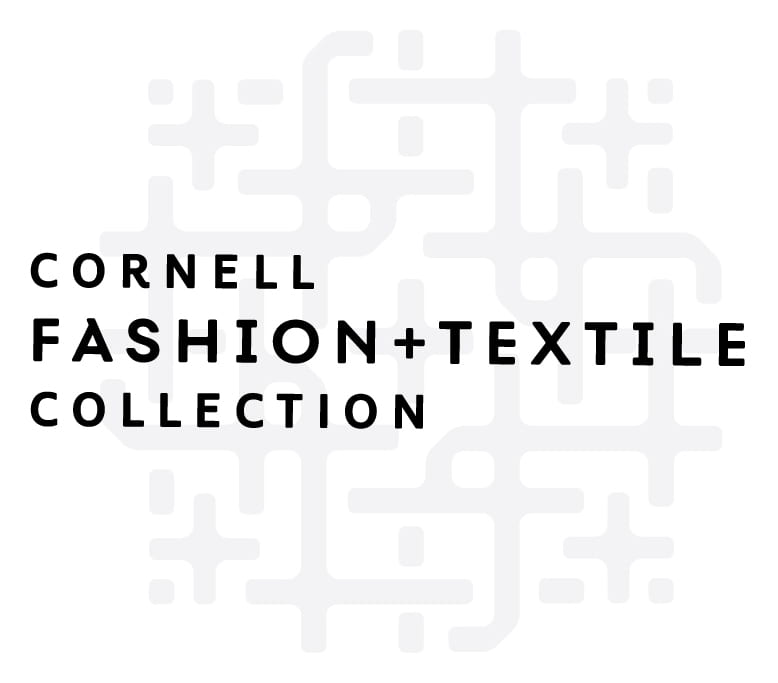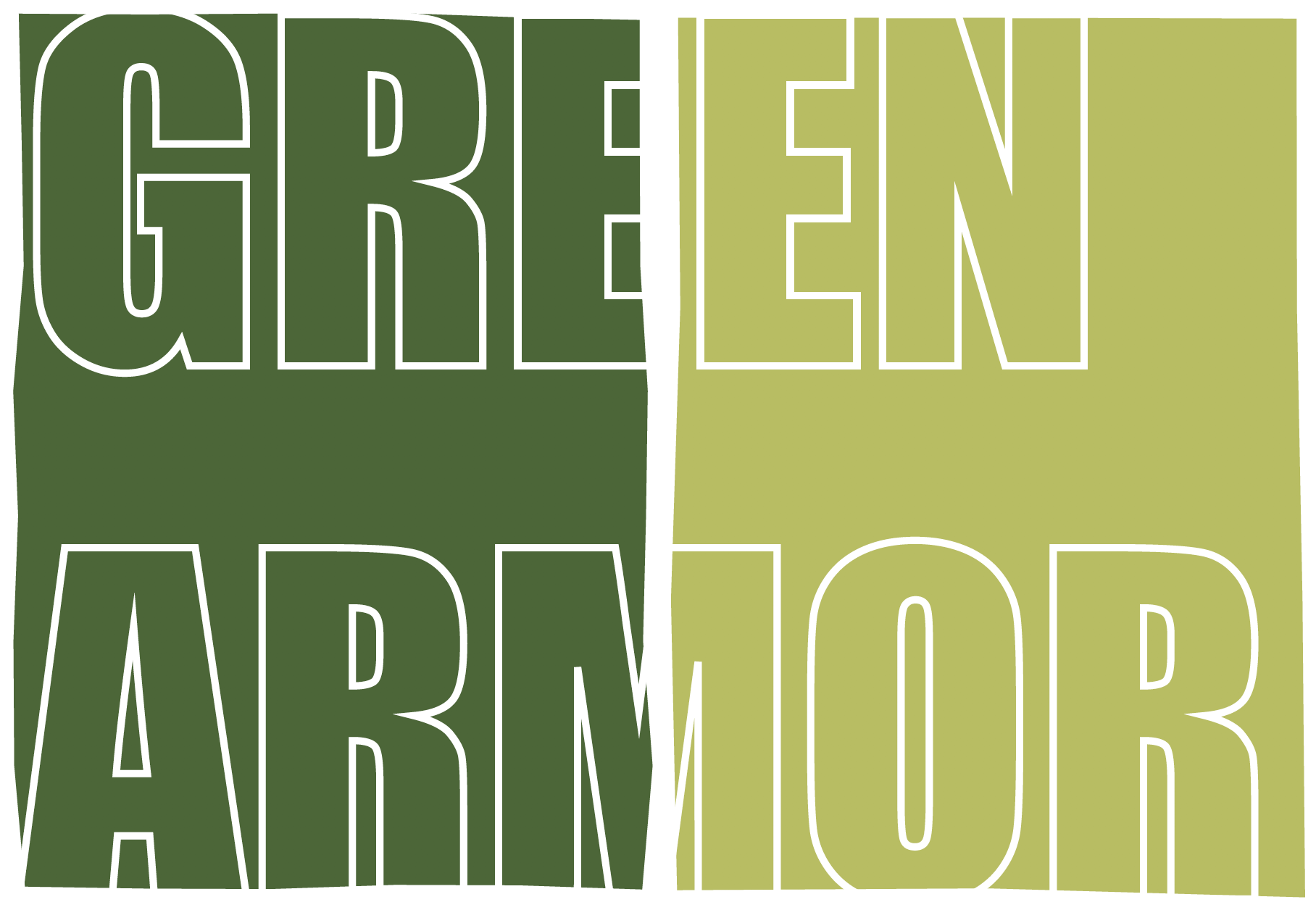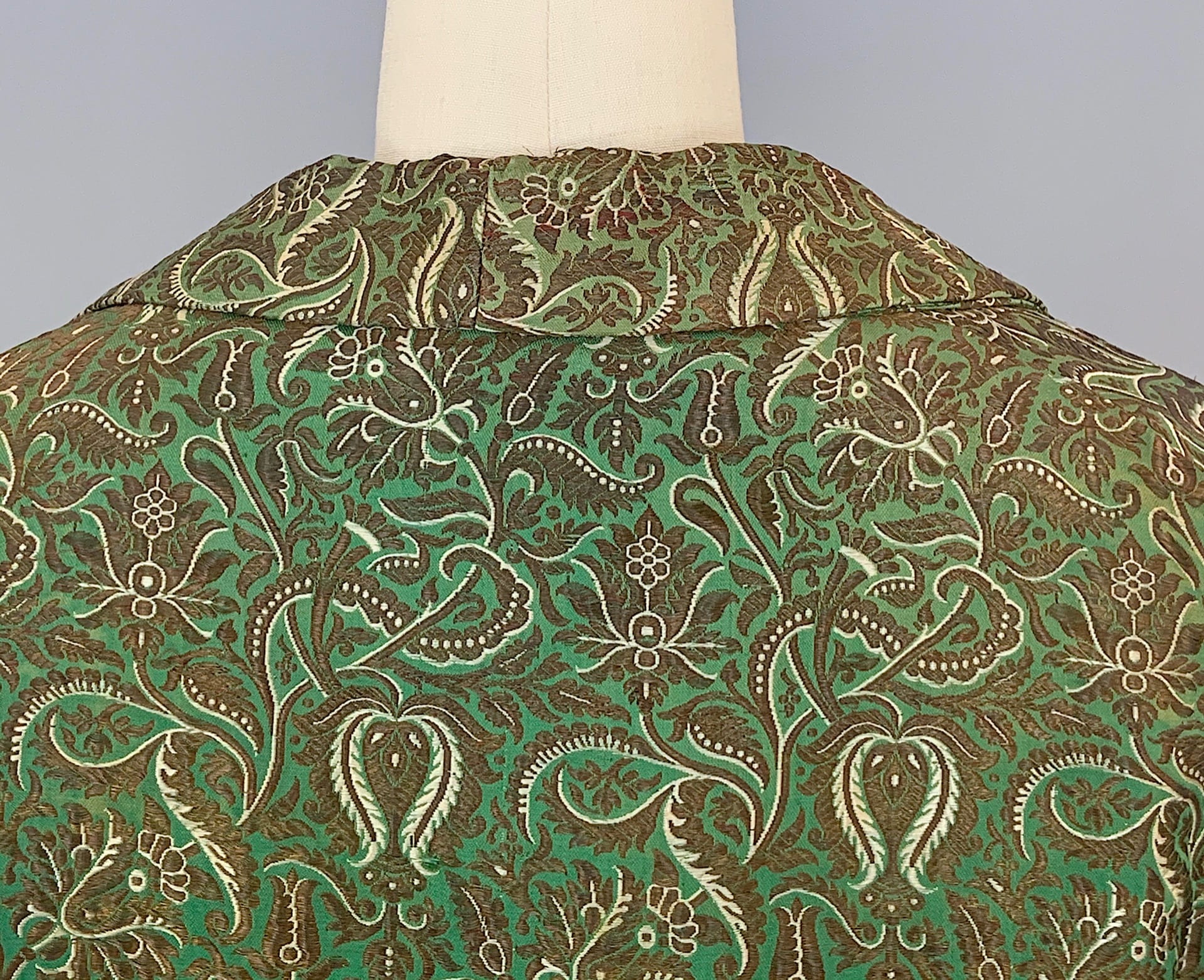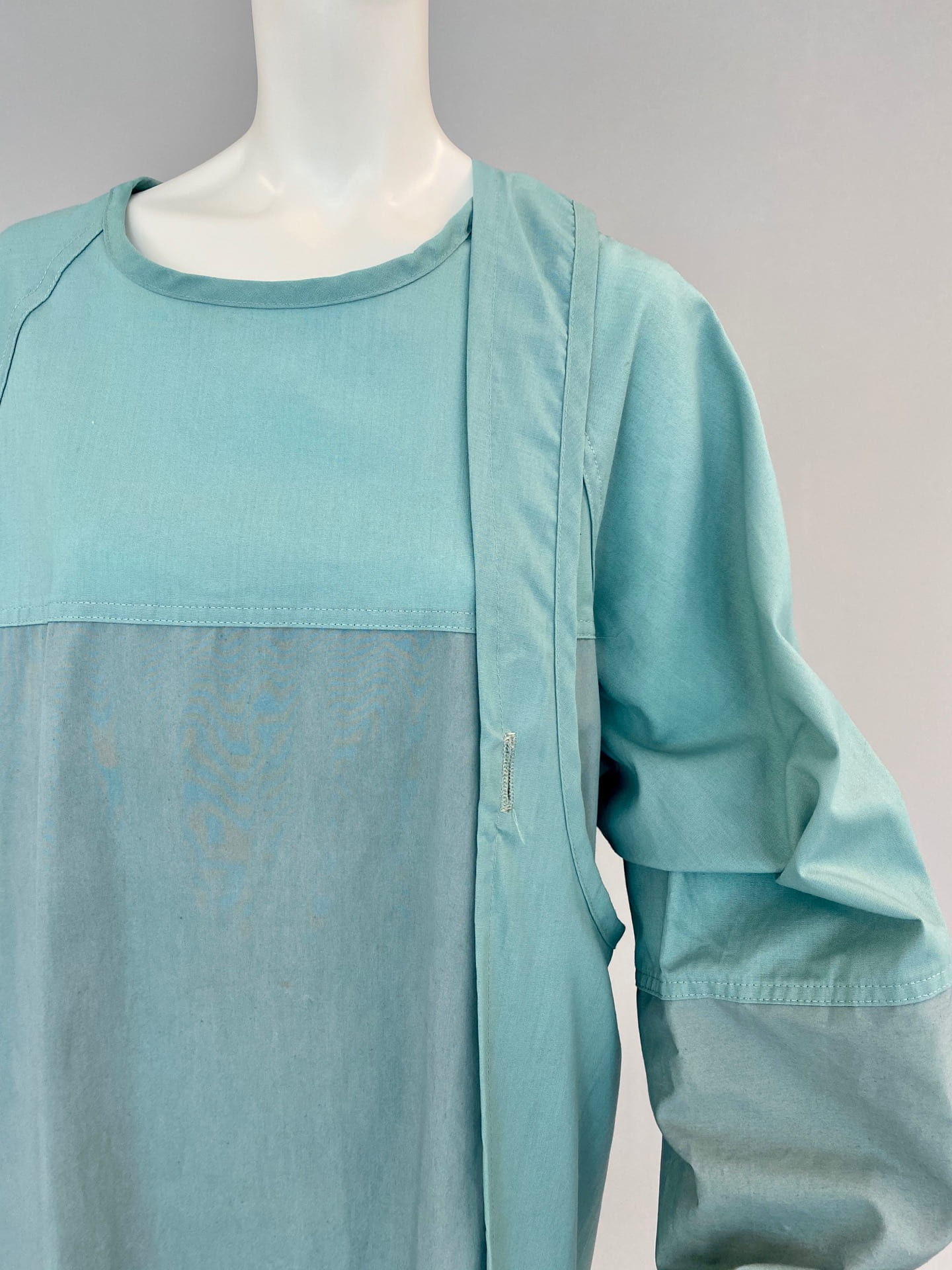
Two-toned green surgical gown produced by the Fashion Seal Uniforms division of Superior Surgical Manufacturing company. Sections of the garment are made of “Liqua-shield,” a waterproof fabric designed to prevent bacteria or contaminants from penetrating the fabric. The complementary green color is used to desaturate blood stains on the fabric.
“We are contemporaries to catastrophe. Over 200,000 U.S. deaths and counting. Green has become our ‘new normal,’ a color we must aspire to when our government has failed to mitigate or respond appropriately to the call of the people – what can we do? We adorn ourselves in the power of green: suits, coats, wraps, gowns, socks and shoes, a modern human’s armor to the elements, from the eyes, to the feet. We can celebrate the shelter these objects provide, through the lens and unifying pizazz of the ubiquitous, culture crossing, looks good on everyone: GREEN.” -Curator Christine McDonald, MFA ’22
Contact: fashioncollection@cornell.edu
Location & Access: Human Ecology Building, Level T Display Cases (opening Oct. 5) and a satellite exhibit in the Opatrny Gallery in the Herbert F. Johnson Museum of Art (Oct. 20 – Nov. 2). Campus visitors must abide by Cornell’s travel and visitor policy, which significantly restricts visits by individuals not part of the residential Cornell community, at least through the fall semester. Campus visitors are prohibited from entering any campus facility. Only approved current students, staff or faculty, essential vendors, or individuals approved, in writing, by the provost or appropriate dean, vice president or their delegate, may access campus facilities. Digital access to the exhibition will be available in mid-October.
Ithaca, N.Y. – The Cornell Fashion + Textile Collection will launch Green Armor, an exhibition that explores and celebrates the power of the color green as a form of armor throughout fashion history. The exhibit is a rapid fashion curation project in response to our current campus climate, spearheaded by Christine McDonald (Cornell MFA ‘22) in collaboration with undergraduate and graduate students in Dr. Denise Green’s “Curating Fashion Exhibitions” course, which is part of the Cornell Society for the Humanities 2020-2021 “Fabrication” theme. Green Armor is a multi-sited exhibit that considers the fabrication of protection, and will open in the Human Ecology Building’s ground floor display cases (Level T) on October 5, with a satellite exhibit on display in the Opatrny Gallery in the Herbert F. Johnson Museum of Art, Oct. 20 – Nov. 2, 2020.
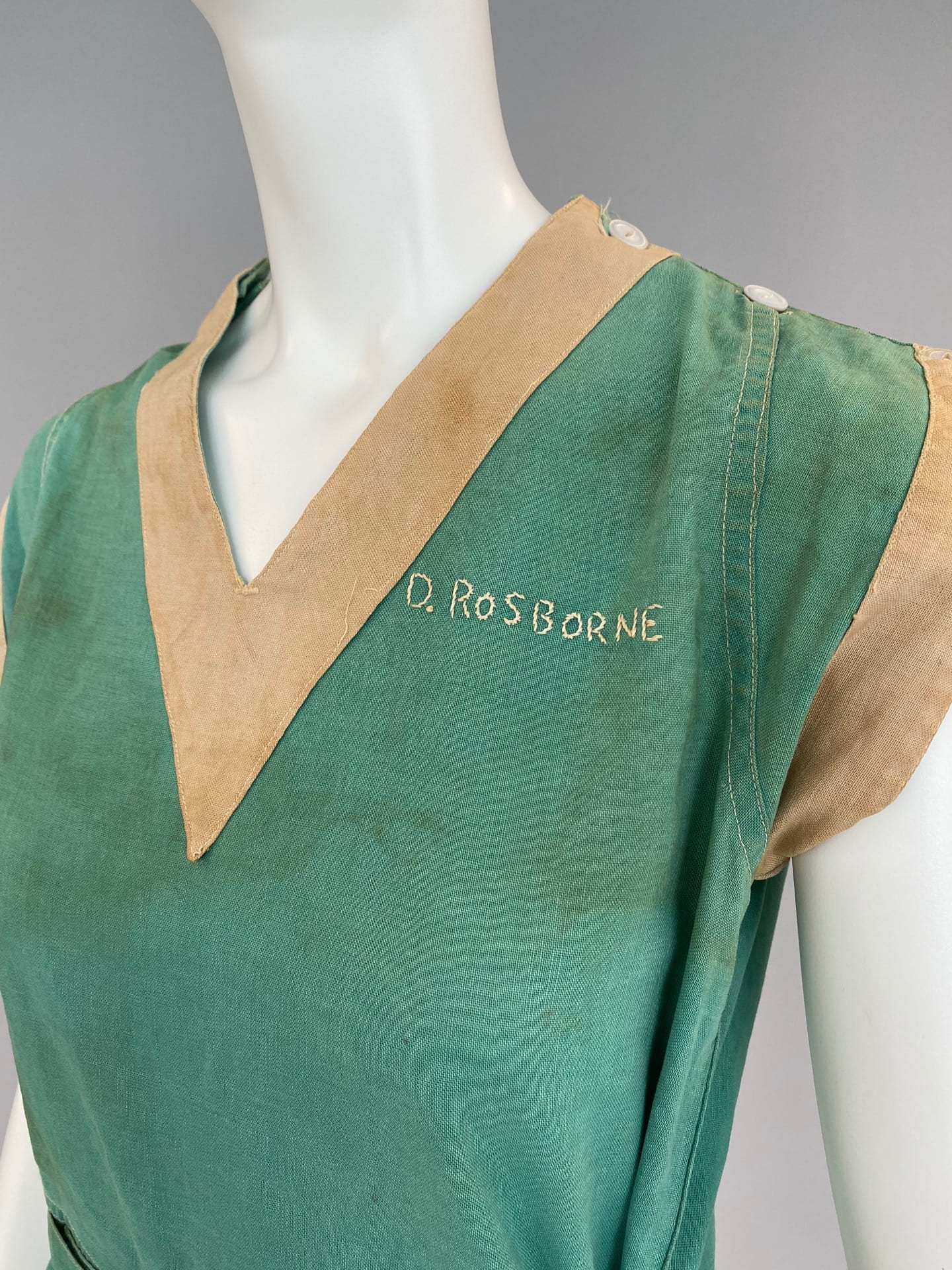
One-piece gym suit worn by Beatrice Falk when she was a student Walton High School in the Bronx, NY 1935-37, and later by her daughter, Dianne Rosborne Meranus CU ’65 when she was a high school student at Bronx High School of Science (class of 1961). The suit is a romper, which is similar in function to overalls: they must be pulled up from the bottom and buttoned on the top.
The color green has many disparate connotations: it symbolizes sustainability, nature, newness, vitality, and growth, but also toxicity, greed, envy, and money. Green has a longstanding relationship with the human body: it signals illness but also alerts the body when it is safe to “go,” enhanced today by our collective Cornell COVID-19 dashboard that reminds us green is the “new normal.” From grass skirts and saris to coats, bathing suits, and footwear, the exhibition is organized according to different groups that employ green: The Troupers, The Emissaries, The Dancers, and The Viewers in the Human Ecology Building, and The Playwrights (in three acts) at the Herbert F. Johnson Museum of Art.
The first part of the exhibition, The Troupers, explores the reshaping and cloaking of the human body. From a surgeon’s smock and Iranian chador to a fur opera cape and an early 20th century wedding gown, the diverse array of garments engage in a conversation about covering the human body. “Covering the body is artful; the act lends itself to mystery, pageantry, practitioning, performance, and play,” says McDonald.
From power suits to gymwear, The Emissaries explores the dichotomous function of the suit as a costume for both leisure and the workplace. Though these garments serve paradoxical purposes, they deliver the wearer into their desired sphere.
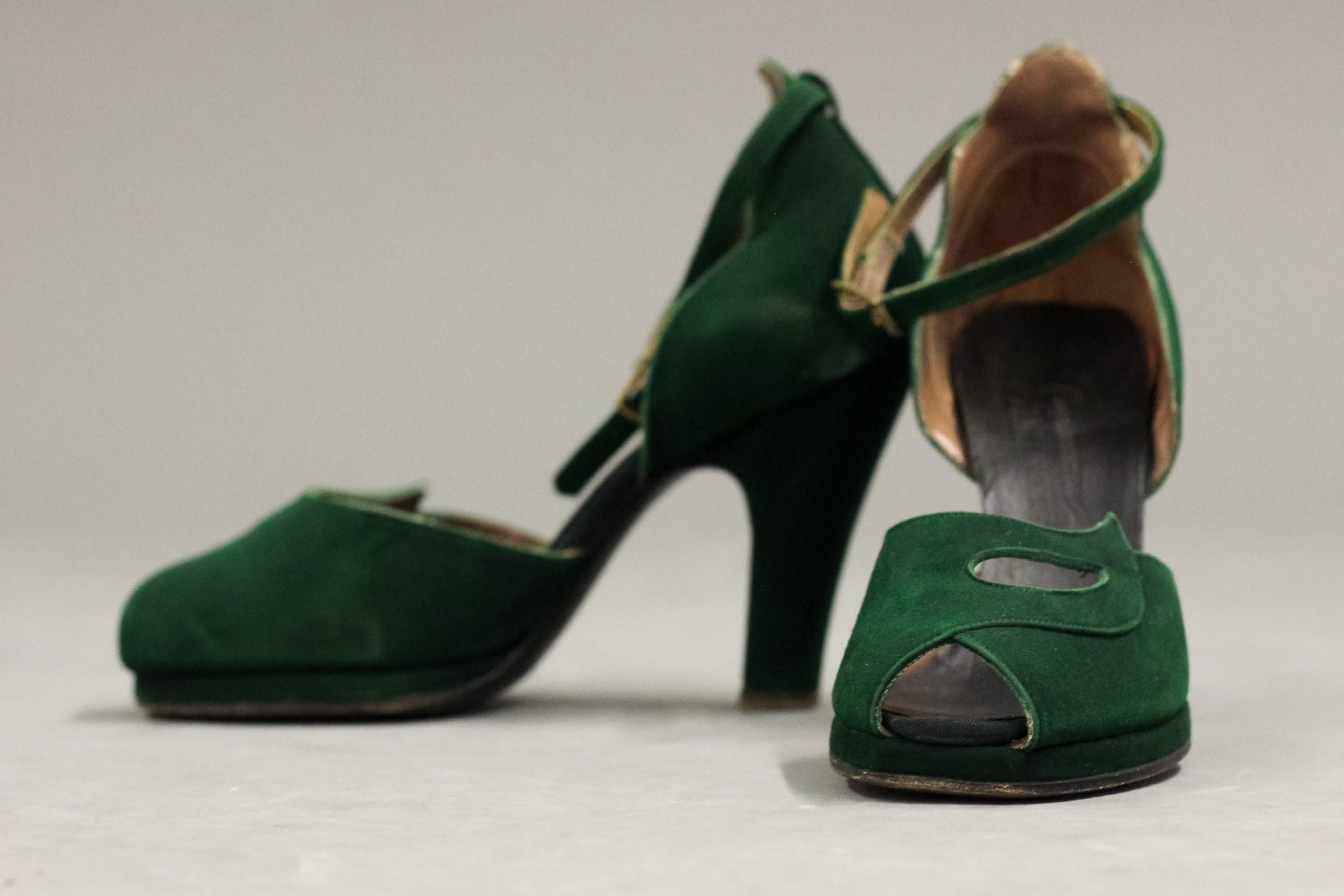
These 1948 green suede peep toe pumps were made for Valentine’s, a popular footwear brand of the time. Photo by Grace Anderson.
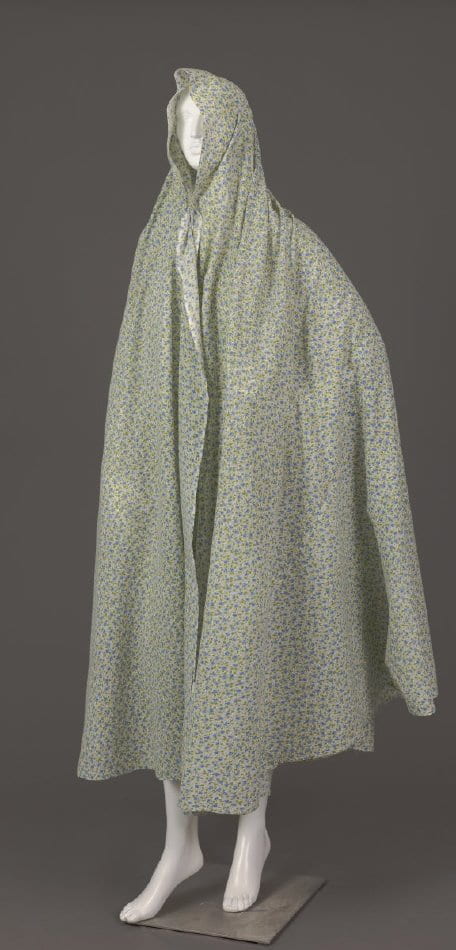
Iranian chador, a traditional covering worn by Iranian women in public and private spaces, dating back to 1929. Photo be Rhea Garen.
The third part of the exhibition, The Dancers, features a collection of shoes and socks across a vast array of cultural contexts and eras. From zōri sandals to an 1830ss baby shoe, the pieces on display reflect movement in the life of the wearer. Especially relevant today, “The current 2020 climate is one of unsure movement, unsure momentum,” explains McDonald. “Perhaps by mediating on the feet and where they take us, we can ponder how we might move and think too about the protection we curate for ourselves.”
The Viewers focuses on “seeing green” as a way of being. Showcasing a pair of green-lens pince-nez, The Lens and Filters meditates upon seeing green literally and metaphorically, as we observe green as a system of defense and a way to see further.
The concept of Green Armor is not only conveyed through the physical adornment of fashion, but also through the ways in which visual artists have represented such performances in art. Each of the artists included in The Playwrights, the last portion of the exhibit on display in three acts at the Herbert F. Johnson Museum of Art, have either interpreted the act of covering, dressing, or exposing the body through photography, painting, printmaking, and drawing. In ACT I: Covering the Body, the artworks explore how fashion has been used to protect, obfuscate, or stand in for the body. ACT II: Dressing the Body, considers the role of fashion in conveying the identity of the sitter or wearer. The artworks selected for ACT III: Revealing the Body create a conversation around how certain parts of the body are used to provoke and/or challenge cultural ideals related to gender and sexuality.
Showcasing wraps and gowns, suits, performance wear, artworks, and eyewear, Green Armor seeks to chronicle the history of the color in sheltering, unifying, adorning, and protecting the human body. Its individual cases grouped according to the people across various cultures, times, and environments, Green Armor aspires to open a thoughtful dialogue between static garments and the movement they enact and enable.

Early 20th century green glass pince-nez, a style of eyewear that pinch the nose rather than hook around the ears.
Locations: Level T, College of Human Ecology Bldg., Cornell University central campus, Ithaca, NY 14853.
Satellite Exhibit: Opatrny Gallery, The Herbert F. Johnson Museum of Art, Oct. 20 – Nov. 2, 2020
Social media: Instagram: @cornellfashioncollection Facebook: @cornellfashion
Acknowledgements: Special thanks to the Cornell Fashion + Textile Collection, Herbert F. Johnson Museum of Art, Society for the Humanities, Department of Fiber Science and Apparel Design, and the College of Human Ecology at Cornell University.
Curatorial team: Students enrolled in SHUM/ARKEO/VISST 4651/6651 “Curating Fashion Exhibitions”
Faculty advisor: Dr. Denise N. Green
Chief curator: Christine McDonald
Artifact handling and mannequin dressing: Georgia Hausmann, Karelia Jaramillo, Juliana daRoza
Graphic design: Chi Yamakawa
Photography: Deja Gilliam and Will Blankman
Installation: Joshua Johnson, Kat O’Neal Roberts, Lynda May Xepoleas
Text editors: Mona Maher, Lily Elkwood
Online exhibit website: Dyese Matthews, Jenny Leigh du Puis, Emily Hayflick
Social media: Betsye Violette, Gunner Park
Digital monitor design: Jeyeon Jo
Press release and promotion: Livia Caligor
